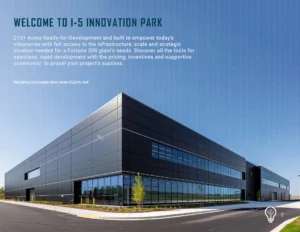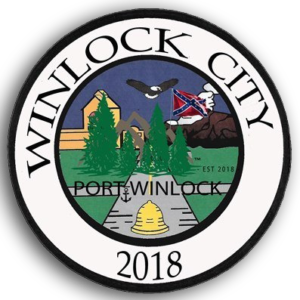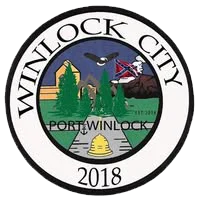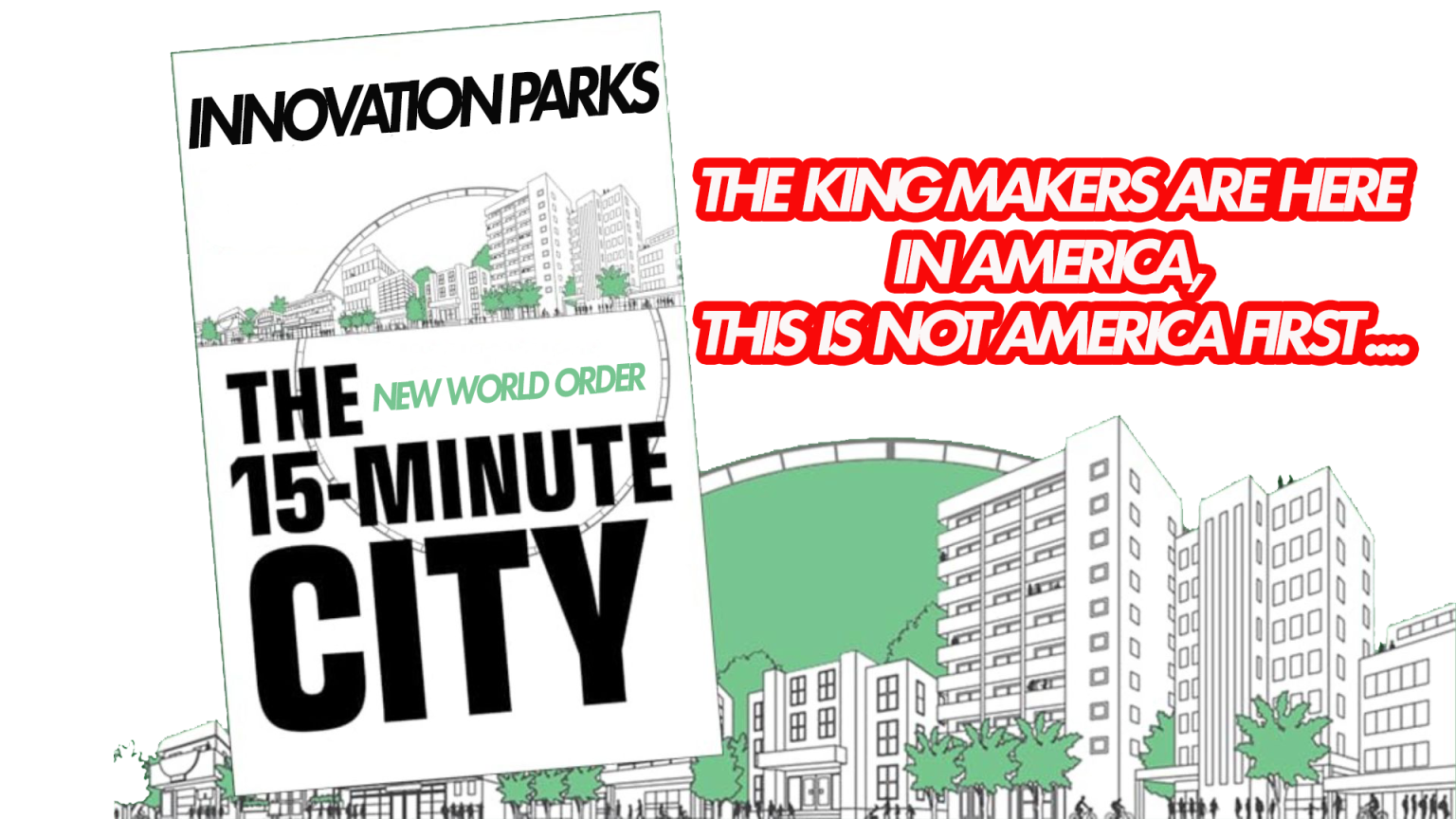Are Innovation Parks like the one in Washington state like Freedom Cities?
Not exactly!

Innovation parks are designated areas that foster research, technology development, and entrepreneurship, often linked to universities or tech hubs like I-5 Innovation Park | Winlock, WA All the while taxing the public to pay for everything. The White House launched this politically potent high-tech program and there’s a reason you haven’t heard of it. It was a way to tax the rich and place more of a tax burden on the middle class.
A Biden administration program aimed to pour billions of dollars into technologies of the future in the U.S. heartland. Instead, it’s been starved by Congress and potentially destined to stay that way. Our American Heritage is disapearing…..
Benaroya really is a bad idea for the NW, they are selling our land to Germans or other King Makers from around the world. Seattle times refers to the Benaroya’s as “Empire Builders”. Meet one of these Kingmakers here…
Freedom Cities, on the other hand, are a newer concept proposed to create urban zones with streamlined regulations, fast-tracked infrastructure, and private-sector partnerships to accelerate innovation.
infrastructure, and private-sector partnerships to accelerate innovation.
While both aim to boost technological progress, Freedom Cities take a broader approach, potentially allowing private governance and experimental policies. Some compare them to special economic zones, like Shenzhen in China, which helped drive rapid economic growth.
In 2022, Congress created the Tech Hubs Program to strengthen U.S. economic and national security by commercializing the technologies of the future. The investments made through this program can ensure that critical industries, companies, and jobs start, grow, and remain in the United States.
While these opportunities are exciting, all federal investment must be strategic, smart, and result in the best return for the taxpayer. Regrettably, on its way out the door, the prior Administration announced awards to six Tech Hubs, even though the funds were not yet available. Moreover, the process was rushed, opaque, and unfair- administration officials did not make prospective applicants aware of the competition and chose awardees using outdated applications submitted nearly a year earlier. A rushed process using outdated information is no way to invest taxpayer funds.
At my direction, the Commerce Department is revamping the Tech Hubs program to prioritize national security, project quality, benefit to the taxpayer, and a fair process. The EDA will release a new notice of funding opportunity this summer with the goal of announcing selections in early 2026. To be clear, this decision is not an indictment of the work that the previously selected Tech Hubs are doing. They can compete for funding alongside all other prospective applicants. This decision is about fairness and making prudent choices with hard earned taxpayer dollars. The process will be transparent, fair, and ensure that the American taxpayers are investing in the best technological advancements to bolster the growth of critical industries in the United States.
U.S. Secretary of Commerce Howard Lutnick
“Trumps Freedom City”
Freedom Cities are new urban districts—established on federal or opt-in private land—that
cut through overlapping regulations to accelerate housing, biotech, aeronautics, and energy
development. By waiving or streamlining NEPA reviews, fast-tracking permits, and offering
strategic tax incentives, these enclaves aim to re-shore manufacturing and restore U.S.
competitiveness. Proposed legislation provides regulatory opt-outs, pro-growth building
codes, and a White House task force to ensure swift approvals and robust interagency
coordination. Conservative estimates suggest $94–$99 billion in direct investment and
roughly 768,000–783,000 total new jobs across ten pilot cities. Potential sites range from
Utah’s desert expanses to the Bay Area’s Presidio, leveraging both existing infrastructure
and underutilized federal acreage. In doing so, Freedom Cities present a transformative
model for revitalizing American innovation, delivering affordable housing, and fostering
next-generation industries.
The Biden administration expected the innovation hubs to spur scientific and technological innovation in communities across the country, including small and rural areas and those with historically underserved populations. Instead, democrats DEI agenda took over everything….
Oregon State University was to be the lead agency in two hubs: the Corvallis Microfluidics Tech Hub and the Pacific Northwest Mass Timber Tech Hub. Portland State University was one and a third focused on energy storage.
Two more hubs landed in Washington, according to a news release from Gov. Jay Inslee’s office, one of which is a mass timber hub and the other of which will focus on aerospace materials manufacturing. All this while attacking the nuclear family in Washington state and implementing DEI in the workplace, and at every school….
Seattle continues to be the center for all D.E.I. agendas in Washington state.
“The announcement of two new tech hubs within Washington state is a remarkable win for our state’s world-leading timber and aerospace industries,” Inslee said in a statement. “The CHIPS and Science Act is helping us build our competitive edge and we appreciate the support of our congressional delegation in ensuring President Biden’s Investing in America Act includes investments in Washington state.”
The old CHIPS Act is dead. Meet the new CHIPS deal.
Spokane’s aerospace Tech Hub loses $48M federal grant, sparking regional outcry
President Trump just signed an executive order creating a US Investment Accelerator with responsibility to negotiate billions of dollars in “much better” grants deals under the CHIPS Act than those forged during the Biden administration.
“The Investment Accelerator will be responsible for administering the CHIPS Program Office, where it will deliver the benefit of the bargain for taxpayers, negotiating much better CHIPS Act deals than the previous Administration,” according to both a White House executive order and fact sheet released March 31.
The outcome of the revamp process of grants could eliminate some of the more “woke” elements in guardrails required by the Act, such as environmental protections and child care requirements during the construction or operation of a large new fab, three industry officials said, asking not to be identified. Conversely, grants recipients might be required to increase the private contribution they have agreed to make to build a new fab.
One industry official said environmental permitting affecting wildlife and waterways might be eased, saying somewhat sarcastically it would be a choice of “fish or chips.”

Meanwhile, Commerce Secretary Howard Lutnick has begun urging companies that have already won grants to contribute more private dollars to their domestic construction projects than agreed upon during the Biden administration under Commerce Secretary Gina Raimondo, according to reports and industry officials who spoke to Fierce. President Trump said the tariff threat he raised was why TSMC decided to boost its US contribution toward chip manufacturing of $60 billion to $160 billion.
Some background on the CHIPS Act and what it means for the Accelerator
The CHIPS and Science Act passed with bipartisan support in 2022 and was signed by President Biden. Some of the initial concepts of the act were conceived during the first Trump presidency. As passed, the Act grants $52.7 billion for research and domestic semiconductor-related manufacturing. Of that amount, about $2 billion was allocated to Intel for a defense-related semiconductor project with another $11 billion for various research grants.
Of the remaining $39 billion in grants for manufacturing, the CHIPS Program Office had signed as of January contracts for more than $36 billion with various companies. However, the US Treasury has only sent checks to grant recipients totalling about $4 billion. Potentially that means the Investment Accelerator could renegotiate how $35 billion, or even more, is dispersed. In his joint session to Congress on March 4, the president called the CHIPS Act a “horrible, horrible thing…You should get rid of the CHIPS Act and whatever is left over, Mr. Speaker, you should use it to reduce debt.”
The CHIPS Act also included a 25% tax credit for new domestic construction work in semiconductor-related areas, which applies to all companies, not just those who are grants recipients. Some electronics companies have already reported taking advantage of the tax credit in earnings reports, and industry officials said the tax credit is far more valuable to companies than the grants in some cases, resulting in billions in savings over the lifetime of a project. Lutnick is reportedly interested in using the tax credit to his advantage in negotiating deals in the Accelerator process and might even seek to raise the percentage of the credit above 25%.
How the Investment Accelerator will work
The US Investment Accelerator will operate within the Department of Commerce and will have several duties including administering the CHIPS Program Office to negotiate the “much better CHIPS Act deals.”
In addition the Accelerator is charged with accelerating investments above $1 billion in the US with several tools: reducing regulatory burdens; speeding up permitting; coordinating responses to investor problems across multiple federal agencies; increasing access to national resources; facilitating collaboration with national labs; and working with all 50 state government and their economic development officials.
“An Investment Accelerator is needed to cut through red tape and ensure that business can quickly deploy capital and create jobs without navigating a maze of bureaucratic hurdles,” the White House said. “By streamlining processes, the Accelerator will attract both foreign and domestic investment, reinforcing America’s position as the premier destination for large-scale investment.”
The fact sheet concludes: “With the Investment Accelerator in place, President Trump is supercharging the flow of capital into the United States, boosting prosperity across the nation.”
What’s happening to the CHIPS Program Office at NIST now under the Acclerator?
According to industry officials who spoke to Fierce, the CHIPS Program Office at NIST is still functioning and working with grantees, although its workforce has been reduced under federal cuts that eliminated workers with less than two years on the job. Officials at Commerce and NIST could not be reached to comment, however. At one point, DOGE was expected to cut NIST overall by 500 jobs, but the number has been far fewer so far.
One long-time NIST professional still working at the Commerce agency told Fierce that staffers had been asked to take a $25,000 one-time payment to voluntarily leave NIST by May 3 and he knew of two staffers who had taken the offer. The deadline to take the offer is April 17, the NIST employee said, after which DOGE or Commerce will determine how many more workers must be laid off.






































